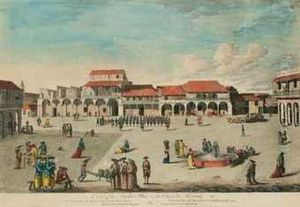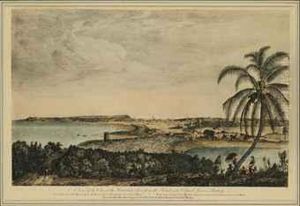Elias Durnford Paintings
Elias Durnford was a British colonial military officer, engineer, and cartographer, rather than a traditional artist. He was born on June 22, 1739, in Ringwood, Hampshire, England. Durnford is best known for his role in the design and planning of the town of Pensacola in West Florida, which was a British colony at the time. He was also noted for his detailed maps and plans of British colonial holdings.
Durnford began his military career in the Royal Engineers, where he honed his skills in engineering and cartography. His talents led him to be appointed as the Engineer and Surveyor General of West Florida in 1764. During his tenure, he was responsible for surveying the territory and designing the new capital of the colony, Pensacola, after the British had taken control from the Spanish following the Seven Years' War.
In 1770, Durnford returned to England, but he was sent back to West Florida in 1774 with the rank of lieutenant colonel to serve as the acting governor. His time in this position was marked by the challenges of the American Revolutionary War, where he played a key role in the defense of the colony against Spanish forces. Despite his efforts, the British were ultimately forced to surrender Pensacola in 1781.
Durnford's work in cartography and town planning has been recognized by historians for its accuracy and detail, contributing valuable insights into the geography and colonial development of the region during the 18th century. Although he may not be remembered primarily as an artist, his technical drawings and maps are considered important works that meld scientific precision with aesthetic qualities.
Elias Durnford's later life saw him return to England, where he lived until his death in 1794. Despite the military and political challenges he faced, his legacy lives on through the maps and plans that remain as historical documents of his time, illustrating the intersection of art, science, and military engineering in the context of British colonial ambitions.

